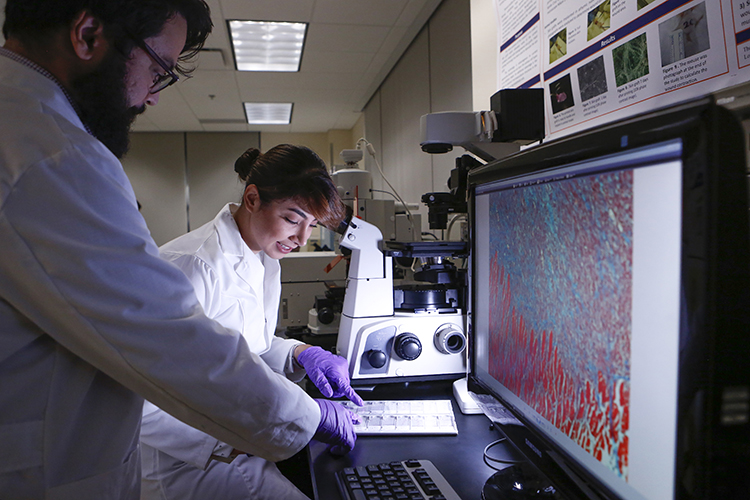UTEP In the Spotlight: Issues in Science and Technology
Last Updated on March 04, 2019 at 12:00 AM
Originally published March 04, 2019
By UC Staff
UTEP Communications
The University of Texas at El Paso is the top institution in the continental United States for producing Hispanic bachelor’s graduates who continue on to earn doctoral degrees in science, technology, engineering and math (STEM) fields, according to an article published in Issues in Science and Technology.

Students conduct research in the Biomedical Device, Delivery, and Diagnostic lab in the College of Engineering. Photo: UTEP Communications
The article written by Freeman A. Hrabowski III, Ph.D., president of the University of Maryland, Baltimore County (UMBC), and Peter H. Henderson, Ph.D., senior advisor to the UMBC president, analyzes the available data from the National Science Foundation (NSF) on the baccalaureate origins of the country’s Hispanic and African-American doctorate recipients. Their findings indicate that UTEP is a national leader in advancing academic diversity to develop and sustain a diverse STEM workforce. UTEP ranks No. 3 in producing students with bachelor’s degrees who subsequently earn doctorates. The University of Puerto Rico-Mayaguez and the University of Puerto Rico-Rio Piedras rank Nos. 1 and 2, respectively, making UTEP the top university in the contiguous states.
Issues in Science and Technology is a publication for discussion of public policy related to science, engineering and medicine. Its goal is to bolster public and private policy to create a better world, and to raise the level of debate and mutual respect among those who appreciate the critical contributions of science and technology.
Read the full article at Issues in Science and Technology.